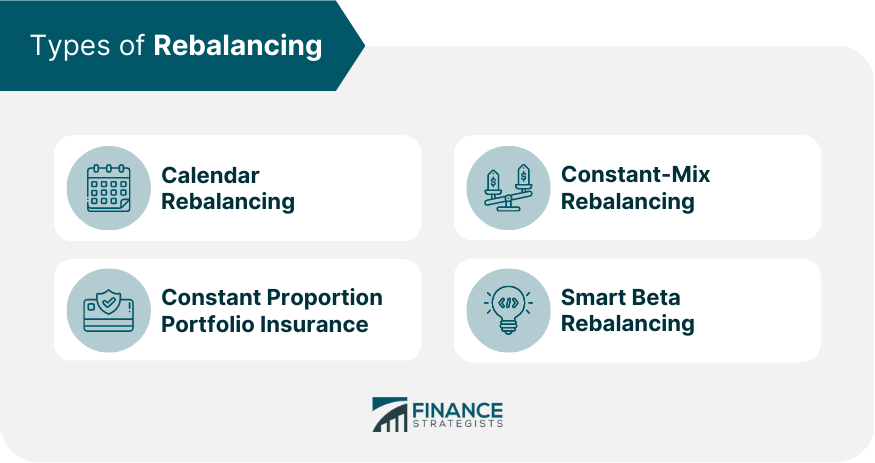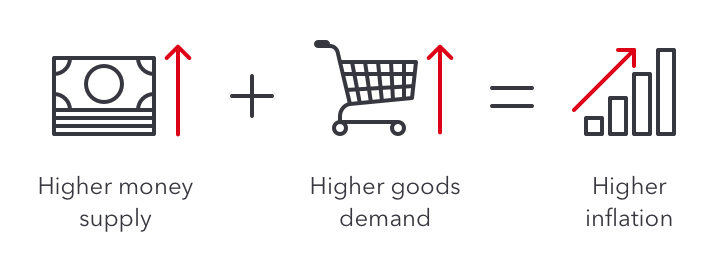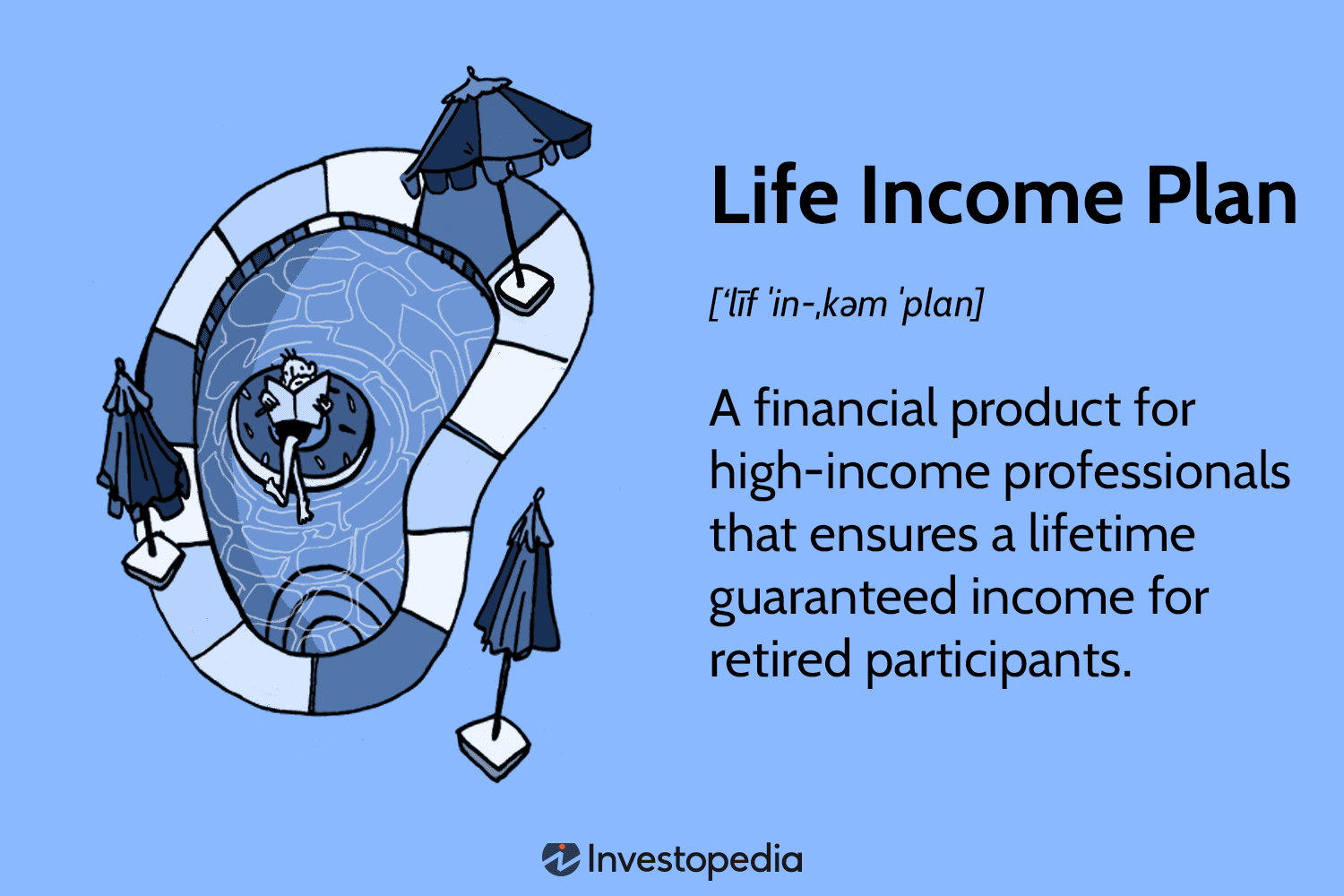Annuity vs Perpetuity Regarding investments, you’ll hear two of the most common terms: annuities and perpetuities. But what do they mean? And how do they differ from one another? In this article, we’ll take an in-depth look at annuity vs. perpetuity and help you decide which is best for your financial situation. Annuity vs Perpetuity
An annuity is a contract between a person or company and an insurance company that provides steady payments over time. Annuities are often used as retirement income vehicles since they provide guaranteed prices throughout one’s life. On the other hand, perpetuity is an investment vehicle with no set expiration date, meaning it pays out indefinitely until its funds run dry. They can be found in various forms, such as bonds, stocks, real estate investments, and more.
The critical difference between annuities and perpetuities lies in their respective payment structures: while annuities pay out fixed amounts on predetermined dates, perpetuities have no set payment schedule and return varying sums depending on market conditions. If you’re looking for consistent returns over time without worrying about market volatility, investing in an annuity is right for you. Read on to learn more about the differences between these two types of investments!

Definition of Annuity
An annuity is a contract between an individual and a financial institution where the individual pays money into the contract, either in one lump sum or over time. Then it receives payments from the financial institution at regular intervals. The term “annuity” comes from the Latin word for a yearly fee. An annuity can be structured to provide income on different terms, such as annually, semi-annually, quarterly, monthly, or even daily, if desired. Generally speaking, it’s important to note that when someone purchases an annuity, they buy a stream of future cash flows. Annuity vs Perpetuity
When purchasing an annuity, there are two main types to choose from: immediate or deferred. With immediate assistance, the purchaser makes a single payment upfront and begins receiving periodic payments immediately after purchase. Deferred annuities involve multiple premium payments made before any payouts begin; these typically offer more growth potential than immediate annuities but also come with additional risks due to market volatility. However, depending on your needs, most deferred contracts have options like death benefits, which may be worth considering. Annuity vs Perpetuity
Overall, understanding the definition of an annuity and how it works will help you make informed decisions when selecting the right product for your specific situation. From here, we move on to defining perpetuity.
Definition of Perpetuity
Unlike an annuity, perpetuity is an investment that pays out indefinitely. This means the income stream has yet to have an end date and continues for years. But what exactly is infinity? Let’s take a closer look at this type of financial instrument.
* Meaning of Perpetuity: A perpetual payment or series of fees made at regular intervals over an indefinite period.
Perpetuity Investment: An asset with cash flows expected to continue indefinitely. It can be fixed (with predetermined amounts) or variable (dependent on market conditions).
Perpetuity Example: Common examples include government bonds and corporate stocks, which pay dividends forever. They typically provide investors with steady returns over long periods.
Perpetuity Definition in Finance: The definition used by finance professionals usually refers to a security that pays out continuously without interruption until it matures or is redeemed by its issuer.
Although the concept seems straightforward, some nuances exist behind investing in infinities, such as taxation issues and potential inflationary effects. Before investing in them, it’s essential to do your research and fully understand their implications. With that said, let’s discuss the types of annuities.
Types of Annuities
Annuities can be classified into two main types: immediate and deferred grants. An immediate annuity is one in which the payments begin immediately at the time of purchase. On the other hand, a deferred annuity starts making payments at some point in the future.
Within these two categories, there are several varieties of annuities. A fixed annuity offers regular payouts with a guaranteed return rate over years or decades. This annuity provides stability and consistency for investors who want reliable income. Variable and index annuities offer more growth opportunities but involve greater risk since their returns are tied to stock market performance.
The various types of annuities each have different features that may appeal to different kinds of investors depending on their individual goals, needs, and preferences. It’s important to consider all your options carefully when selecting an annuity to ensure you’re getting the most out of your investment.
Advantages and Disadvantages of Annuities
Annuities offer many benefits, but there are a few drawbacks to consider. To begin with, an annuity provides guaranteed income for the duration of the contract term and can be used to create financial security in retirement. However, one potential downside is that annuities sometimes need to catch up with inflation. This means that while the payments remain fixed, their purchasing power over time may diminish due to rising prices.
Another disadvantage to consider is that early withdrawals from an annuity will incur surrender charges or other penalties. Withdrawing funds before age 59 also subjects you to taxes and possible IRS penalties. On the bright side, annuitants often enjoy certain tax benefits, such as deferring taxes on earnings until payment begins and spreading out income over multiple years for lower total tax amounts each year.
Overall, understanding both the advantages and disadvantages of annuities is essential so investors can make informed decisions about their investment options.
Investment Options for an Annuity
When considering investing in an annuity, it is essential to know that different types of annuities are available. According to the Investment Company Institute, approximately $277 billion was invested in fixed and variable annuities by US households in 2017.
The most common types of annuities include:
* Fixed Annuity: A type of annuity contract where payments remain the same over the period specified in the contract.
* Deferred Annuity: An investment option that allows investors to save money regularly while deferring taxes until withdrawals occur.
Variable Annuity: An insurance product with investments linked to stocks and bonds that offers flexibility for how much you can invest and when your payments begin.
* Immediate Annuity: An annuitized product purchased with one lump sum payment that begins paying out immediately after purchase.
Indexed Annuity: A deferred fixed index annuity where gains are based upon changes to an underlying market index such as the S&P 500 or Dow Jones Industrial Average rather than changes in interest rates.
In addition to these options, hybrid versions combine features from several different types of annuities, giving investors more control over their retirement savings plans. As always, it’s essential to research before investing in an annuity to understand all the potential risks and rewards associated with each type. With this knowledge in mind, we can now turn our attention to understanding the tax implications of an annuity.

Tax Implications of an Annuity
The previous section discussed the different investment options for an annuity. This section will focus on the tax implications of an annuity and how it can benefit one’s financial future.
When looking at the tax treatment of an annuity, there are a few key points to consider. One is that any money put into a tax-deferred annuity is subject to taxation once withdrawals begin. Secondly, gains from investments within the annuity are taxed when withdrawn. Finally, all withdrawals taken after age 59 1/2 are not penalized by taxes or fees.
These benefits make an annuity an attractive option when planning for retirement, as the funds used to purchase it grow without being subjected to taxes over time.
Furthermore, once distributions start in retirement, those funds may be taxed at lower rates than if earned through other forms of income, such as wages, instead of capital gains and dividends, which would typically have higher rates applied depending on taxable income levels each year.
With these advantages offered by choosing an annuity product, many investors find them beneficial for long-term growth strategies while establishing a perpetual plan toward their financial goals and objectives.
Establishing Perpetuity
At its core, an annuity is a payment that occurs over time. On the other hand, infinity continues to pay out indefinitely. Setting up and establishing a perpetuity requires careful consideration; numerous steps are involved in creating one.
The first step in setting up or creating a perpetuity is determining what type of asset will be used as the payment source. Assets such as stocks, bonds, real estate, and commodities may all be utilized depending on the situation. Once this decision has been made, it’s essential to determine how much should be invested initially and how frequently payments are to occur. This can also include deciding whether additional investments need to be made during the investment term.
In addition to these considerations, another critical factor in perpetuity setup and establishment is understanding the tax implications associated with perpetuities. Certain types of investments may require taxes to be paid at both the federal and state levels, while others might not have any at all. It’s important to understand these rules before beginning so that no surprises arise down the line, leading to unexpected costs or penalties.
Knowing exactly what needs to be done before getting started ensures that all necessary precautions are taken when establishing a perpetuity so that investors reap maximum benefits from their investments without running into any issues. With an understanding of these components and proper planning, people can confidently move forward in making sound decisions regarding their financial future by investing in perpetual assets. Onward, let us explore the different types of permanence available today.
Types of Perpetuities
In contrast to an annuity with a fixed duration, perpetuity is permanent. A perpetually can be classified into several types according to the nature of its payments and other features:
* Zero-coupon perpetuities: These are perpetual investments that make no periodic payments but instead pay out a single lump sum at maturity.
Mortality-Contingent Perpetuities: This type of investment pays out only if the investor lives for a certain period. The amount paid is based on mortality tables.
Limited-Term Perpetuities: This type of investment pays out periodically over a set number of years before maturing. There are usually restrictions on how long these investments can last.
Inflation-Indexed Perpetuities: With this type of investment, payments increase or decrease depending on inflation levels. Prices will generally remain constant when adjusted for inflation.
Equity-Indexed Perpetuities: This type of investment links returns to equity markets, meaning they may fluctuate with market performance over time.
Perpetual investments offer investors many advantages and potential risks compared with traditional financial instruments such as annuities and bonds. Understanding the different types available is essential for making informed decisions about one’s portfolio.
Advantages and Disadvantages of Perpetuities
Perpetuities are like a never-ending river of cash flow, making them an attractive long-term investment. They offer several advantages, such as tax benefits and sustainable income streams. However, they also come with some drawbacks that should be considered before investing in this type of security.
One advantage of perpetuities is achieving consistent and predictable cash flow over the long term. This makes it easier for investors to plan their finances accordingly since they know precisely how much money will become available regularly. Additionally, these investments can provide tax breaks due to their favorable treatment under specific laws, which can further increase profits. Perpetuities also tend to be safer than other types of investments because there is no risk of default or bankruptcy.
On the other hand, one major disadvantage of investing in perpetuities is that they can only be sold slowly if needed. Once implanted, it may take months or even years to liquidate funds from this type of asset without incurring significant losses in value. Furthermore, the returns generated by perpetual security are often lower than those offered by more traditional investments such as stocks or bonds, which could make them less appealing to many investors.
To determine whether a perpetual fund is suitable for your portfolio, it’s important to weigh both the advantages and disadvantages carefully while considering what kind of return you expect from your investment over time. Understanding all the implications can help inform your decision to choose an option that best meets your financial goals and objectives regarding both short-term and long-term performance potential. With this knowledge, you’ll be better prepared when evaluating various investment options for perpetuity.

Investment Options for Perpetuity
Now that we have discussed the advantages and disadvantages of perpetuities, let’s explore some investment opportunities for those considering a perpetual investment. Perpetual investments can take various forms, including perpetual bonds, perpetual securities, and other investing strategies.
Perpetual bonds are debt instruments with no maturity date, which means they do not need to be repaid at any time in the future. These types of investments offer investors an attractive rate of return but come with higher risk than traditional fixed-income investments since there is no guarantee when or if the principal will ever be returned. Investors should also consider that while these investments provide potential returns over the long term, they may face greater volatility than shorter-term bond investments due to their lack of liquidity.
Perpetual securities are equity investments representing ownership in a company without a set expiration date. The dividend payments from these types of stocks may fluctuate depending on market conditions and underlying business performance, making it essential for investors to research before committing funds to these types of assets. Additionally, as with many other equity-based investments, investors could face significant losses if the stock price drops significantly below their purchase value.
Investors seeking more conservative options for their perpetual portfolios might consider specific investing strategies such as indexing or laddering, where instead of owning one security or bond, multiple holdings from different asset classes are held simultaneously, providing diversification benefits. However, this strategy requires careful monitoring and rebalancing to ensure a balanced portfolio composition over time, which can increase transaction costs for investors.
These are just a few examples of how you can structure your portfolio with a range of different investment options available in the market today; however, understanding the tax implications associated with each option is equally important when deciding on suitable investments for your particular needs.
Tax implications of a perpetual
The tax implications of a perpetual trust are significant, particularly regarding estate planning. Perpetuity can be used as part of an inheritance or gifting structure, and several factors should be taken into consideration:
* The tax treatment of the gift or inheritance depends on the size and type of asset in question; this could affect both income and capital gains taxes.
Beneficiaries may have to pay estate taxes if they receive more than certain thresholds set by their state.
Donors must consider any potential gift taxes when making large gifts to heirs.
Understanding these implications before setting up perpetuity is vital because the consequences could be costly for all parties involved. It is wise to consult an experienced financial advisor who can help you navigate these complexities. The following section will explore how annuities compare to perpetuities. With this knowledge, individuals can better plan for their future and make informed financial decisions.
Comparison between Annuities and Perpetuities
When it comes to long-term investments, annuities, and perpetuities are two popular options. Both have their advantages and disadvantages when it comes to tax implications and investment strategies. It is vital for investors to understand the differences between the two to decide which option best suits their needs.
Perpetuity is a financial product that pays out dividends or interest indefinitely into the future, meaning there’s no predetermined maturity date. As a result, taxes associated with this type of product can be more complex than those related to annuities since they follow different rules than other taxable assets. In addition, since perpetual payments come without any end date, there are limited investment options, such as bond funds or Treasury bills.
Annuities provide investors with a steady income over a specific time determined at purchase. Annuity payments may be taxed differently depending on how these products were funded (either from pre-tax or post-tax money). Additionally, annuities offer certain benefits that may not be available through traditional investments like stock market trading, namely protection against inflation risk and a potential death benefit, if applicable. However, one major disadvantage of buying an annuity is that you will likely incur fees and/or surrender charges should you terminate your contract before its expiration date.
Investors should weigh both annuities and perpetuities carefully when looking at long-term investment strategies to determine which option provides them with better returns while still meeting their individual goals and objectives.
When to Use an Annuity or a Perpetuity
The decision to invest in an annuity or perpetuity is often likened to the age-old proverb, “A stitch in time saves nine.” The timing of when one invests in either product can be paramount for reaping the most significant financial rewards.
When it comes to investment timing, several factors should be considered:
Annuity Rates:
Annuities offer lower rates than other investments due to their long-term nature; however, they may provide steady income over many years with some tax benefits.
Additionally, various annuity options are available depending on individual needs and objectives, such as immediate annuities (purchased with a single premium) or deferred annuities (where contributions are made periodically).
Perpetuity Rates:
Perpetuities typically have higher rates than other investments but must be held until maturity. They also generally have fewer features than annuities and require more upfront cash.
A few options are available with infinities, such as fixed-rate bonds or zero-coupon bonds, which pay interest at regular intervals throughout the bond’s life.
Ultimately, investors need to weigh both products carefully before deciding which will best meet their goals and objectives. Investment strategies utilizing both products could maximize returns while minimizing risk exposure. With prudent decisions about when and how much to invest, one can reap more significant dividends from these two instruments without fear of being left behind by market trends.
Investment Strategies Utilizing Both Products
Investing in annuities and perpetuities can provide high levels of security, but risks are also involved. It is crucial to understand both investment strategies to get the most out of your investments. Annuity investments are a form of fixed income that generally pays an investor a set amount over a specific time until a predefined limit or maturity date is reached. In contrast, perpetual investments pay out dividends indefinitely with no predetermined end or maturity date.
There are various strategies for investing in both annuities and perpetuities, depending on the investor’s goals and objectives. For example, investors interested in steady cash flow may prefer an annuity because it offers predictable payments over a specified term. On the other hand, those who want higher returns might be more inclined towards perpetuities, as they tend to generate larger dividend yields than traditional bonds. Additionally, some investors combine their investments into one portfolio by utilizing both products; this strategy allows them to benefit from both stable income streams while still taking advantage of the potential capital appreciation opportunities perpetual offers.
Annuity and perpetuity investments come with unique advantages and drawbacks; therefore, understanding the differences between these asset classes is essential when developing an effective investment plan tailored to individual needs. Now that we’ve covered investment strategies involving annuities and perpetuities let’s move on to discussing risk management strategies associated with these assets.
Risk Management Strategies with Annuities and Perpetuities
Having discussed the investment strategies with annuities and perpetuities, it’s time to look at risk management. When investing, many risks are involved, and successfully managing them can help you maximize returns while minimizing losses. To do this, one must understand the different risk-management strategies that come with annuity and perpetuity investments.
First, investors should be aware of their risk tolerance when choosing an investment strategy. This means understanding what level of risk they’re comfortable taking on and which types of investments better suit their goals. It also entails being realistic about how much money they can afford to lose in case something goes wrong.
When dealing with annuities and perpetuities specifically, here are five key points for effective risk management:
Diversify your portfolio by having some exposure to both products.
Use asset allocation techniques to balance your investments between stocks, bonds, mutual funds, etc.
Rebalance periodically according to market conditions.
Monitor the performance of individual investments regularly.
Take advantage of tax breaks available for certain annuities or perpetual investments.
By following these tips and keeping up with existing regulations related to financial markets, investors will have a good foundation for making informed decisions about annuities and perpetuities. With careful planning and execution, along with professional advice from experienced professionals, if needed, anyone can enjoy long-term success in their chosen field of investing.
Frequently Asked Questions
What Is The Minimum Amount Required To Open An Annuity Or Perpetuity?
When discussing investments, a common question is a minimum amount required to open an annuity or perpetuity. Depending on where you choose to invest, this can vary greatly, and there are a few things that one should consider when deciding which investment option best suits their needs. To determine the minimum amount needed for either an annuity or perpetuity, it’s essential to understand the differences between these two types of investments.
An annuity requires a minimum investment amount to open one, though this varies depending on the provider. Generally speaking, some providers may require as little as $500, while other companies could demand up to $10,000 before opening an annuity account. Additionally, those looking into investing in an annuity must factor in any applicable fees associated with setting up and maintaining the fund over time.
On the other hand, there isn’t usually a set requirement for opening a perpetual fund; however, investors need enough capital available so they are able to stay in their position due to a lack of liquidity if market conditions change unexpectedly. This means that in most cases, there will be at least some form of the minimal initial investment made by the investor before entering into a perpetuity agreement—typically around $100–250 dollars. Furthermore, investors would need additional funds readily available should they want to continue making further investments within their existing portfolio(s).
It’s essential that anyone considering investing in either an annuity or perpetuity fully understand all requirements and costs involved before committing money towards a particular product or service. By researching each type of investment opportunity separately and determining which has the lowest cost structure while still meeting your financial goals, you can make more informed decisions regarding your future investment plans.
What Fees or Costs Are Associated With Annuities or Perpetuities?
When looking at investments, it is vital to understand their fees and costs. Annuities and perpetuities are two such investment options that come with their own unique set of charges. In this article, we’ll take a closer look at the annuity fees, perpetuity costs, annuity expenses, perpetuity charges, and annuity costs associated with these products.
Annuities often involve upfront fees, including sales charges or commissions and administrative expenses. These will vary depending on the insurance company providing the product, but they usually range from 0–7% of total contributions. Additionally, there may be surrender fees if you cancel your policy before its maturity date. Lastly, most annuities have ongoing annual operating expenses like mortality and expense risk charges (M&E).
Perpetuities also require an initial payment when opening the account, but this amount is typically much lower than what’s required for an annuity. There are no ongoing management or maintenance fees associated with a perpetual account; however, you should be aware of any tax implications related to withdrawals from the account. Furthermore, many companies charge early withdrawal penalties, so read all the fine print carefully before investing in a perpetual fund.
The cost of either type of investment depends mainly on individual circumstances and preferences; some might find that an annuity works better for them, while others may prefer a more hands-off approach through a perpetual product. To help determine which option best suits your needs, consider the following:
The amount of money you want to invest
Your desired timeline for returns
Any potential tax benefits offered by each product
Whether or not you need access to your funds right away
No matter which product you choose, understanding the associated costs beforehand allows investors to make informed decisions about their financial future without getting blindsided by hidden fees down the line.
Is There a Difference Between Annuities and Perpetuities in Terms of Liquidity?
Regarding liquidity, the difference between annuities and perpetuities can be significant. Liquidity measures how easily an asset can be converted into cash without affecting its value. Annuity liquidity refers to the ease with which investors can access their funds from an annuity contract while still receiving payments over time. On the other hand, perpetuity liquidity usually means that when money is invested in this instrument, it will remain invested for as long as the issuer specifies, so there may not be any way to access those funds during that period.
To illustrate why these differences are important, consider an example: Let’s say you have $100,000 set aside for retirement income but only need some of it right away. You could invest in an annuity and receive regular payments over many years while always having the option of taking out some or all of your money if needed, giving you greater flexibility and control over your investments than with a perpetual. However, with a perpetuity investment, once you commit your money to the fund, it will stay locked in until maturity unless there is a predetermined exit strategy like selling shares on secondary markets, something not available with most types of annuities.
The implications for liquidity risk differ depending on whether one chooses an annuity or perpetuity. With an annuity, there is less risk associated with accessing funds early since they provide more options for withdrawal; however, this also means that returns tend to be lower overall due to fees associated with withdrawals or changes within the contract terms. Perpetuities offer higher returns but come with more significant risks because if you need to access your money before the maturity date, you may face difficulty doing so without incurring losses or additional costs, making them better suited for longer-term investors who don’t mind tying up their capital for extended periods.
It’s clear that understanding the different levels of liquidity offered by both annuities and perpetuities is essential when planning your long-term financial goals, so make sure to do your research before investing!
How Does Inflation Affect The Value Of An Annuity Or Perpetuity?
Inflation is an important factor to consider when planning for retirement because it affects the value of your investments. It’s especially true regarding annuities and perpetuities, both popular retirement savings vehicles. This raises the question: how does inflation affect an annuity’s or perpetuity’s value?
The answer depends on several factors, including the type of annuity or perpetuity you choose. Annuities tend to increase in value as inflation rises due to their fixed-rate nature. Perpetuities, on the other hand, may decrease in value due to their reliance on future cash flows that may be affected by inflationary trends. For example, if you purchase a 5-year deferred annuity with a 6% annual interest rate and inflation increases from 2% to 4%, then its real return will drop from 4% to 2%. Conversely, if you buy a perpetual bond paying 3% annually and inflation increases from 2% to 4%, then its real return will go up from 1% to -1%.
Additionally, some annuities provide inflation protection through a cost of living adjustment (COLA). Thus, when calculating the expected returns of different types of investments, such as annuities and perpetuities, investors should consider current and projected inflation-level changes. Ultimately, understanding how these various elements interact can help retirees make informed decisions about their long-term financial security during retirement.
Are annuities or perpetuities suitable investments for retirement?
As the saying goes, it’s always early enough to start planning for retirement. When considering investments that will best serve your financial needs in later life, annuities and perpetuities are two options worth considering. Both provide a steady income stream over time, but several significant differences should be considered when making investment decisions.
Annuities are typically considered preferable investments for retirement due to their liquidity: they can be cashed out at any time without penalty or loss of principal. This makes them an attractive option for those who want access to their money quickly if needed—something that cannot be said of infinities, which lock away funds until maturity (or death). In addition, annuity payments are generally adjusted for inflation each year; this helps protect against purchasing power erosion over the long term.
Perpetuities may offer a different level of liquidity than annuities, but they have some advantages. These include higher yields than most other investments and no expiration date on earning potential, unlike with an annuity, where payments end after a set period. They also come with lower fees than comparable annuity products since they don’t require active management by fund managers. Depending on individual circumstances, these features could make perpetuities a worthwhile investment choice for someone looking to secure their financial future in retirement.
Both annuities and perpetuities have distinct pros and cons that must be carefully weighed before committing funds to either; however, both can play an important role in providing security during retirement. Ultimately, only you know what is right for your unique financial situation, so take the time to evaluate all factors involved before deciding whether one of these instruments suits your needs in the future.
Conclusion
In conclusion, annuities and perpetuities are two distinct types of investments that can provide financial security for retirement. While both offer a reliable income stream, there are many factors to consider when deciding which investment is right for you. You’ll need to weigh each option’s initial cost and fees against potential liquidity issues and inflationary effects on your returns.
Ultimately, it’s important to understand what type of investor you are so you can decide whether investing in an annuity or perpetuity is suitable for achieving your retirement goals. Whether you’re looking for long-term cash flow or more liquid assets, understanding the differences between these options will help ensure your success as an investor.
No one knows better than you what kind of financial security works best for providing peace of mind during your golden years. So take some time to research annuities and perpetuities before making any decisions; it could be the difference between a secure future and missed opportunities!
















Leave a Reply